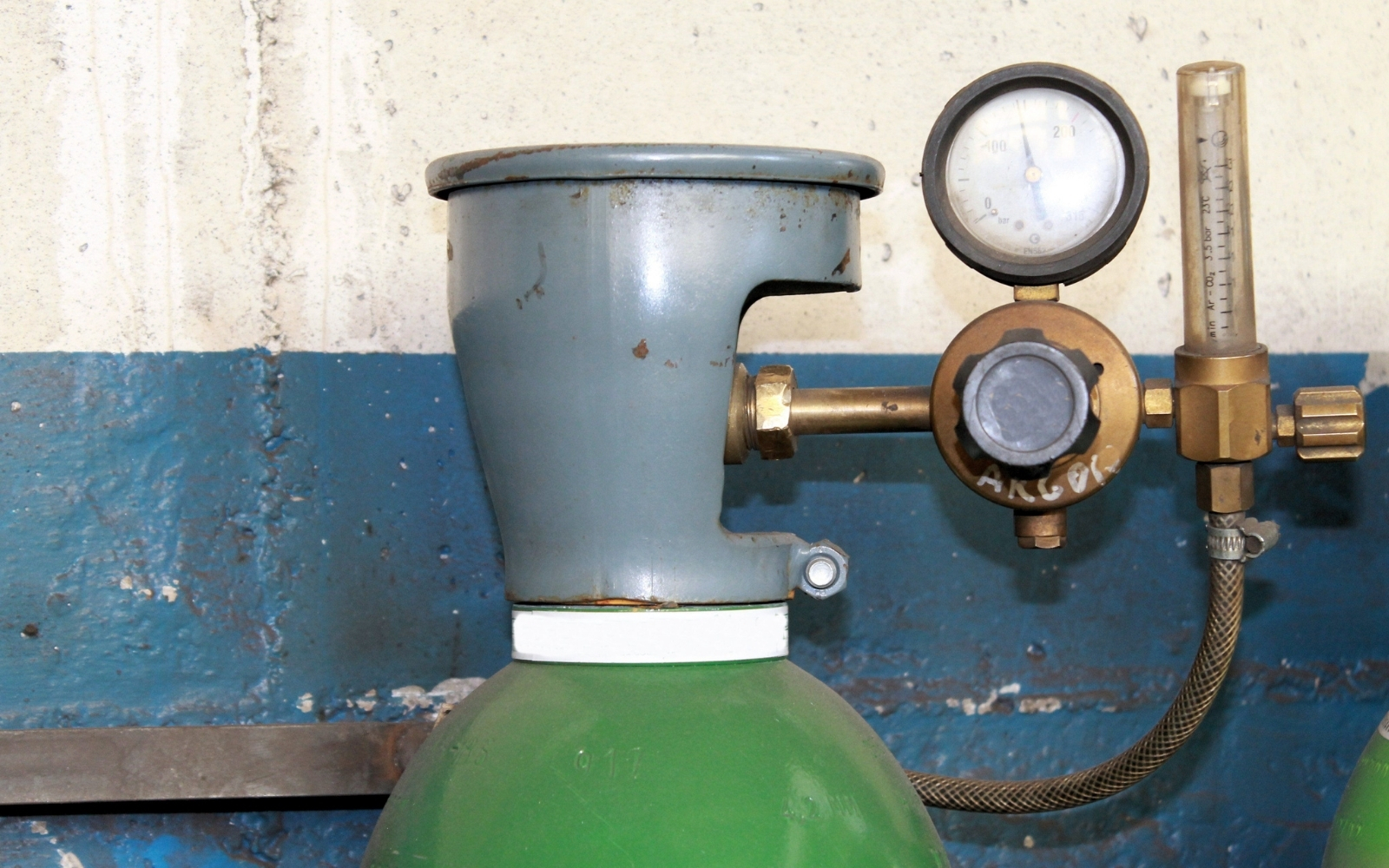- The intensity of effects, chemistry, and mode of action can characterize the toxicity of gases.
- Gases are usually grouped into four classes based on the intensity of toxicity.
- Toxic gases are classified into around fourteen groups based on chemistry.
- Five modes of action are identified for the toxic gases.
Hazardous gases are common in many industries, where hundreds of chemicals are used and produced. Toxicity is one of the significant concerns that industrial hygienists must address to ensure the workplace is safe for people working with, handling, and transporting these gases. The gases vary in the intensity and type of effect produced on people. This article explores the various intensities and types of toxicity to understand common hazardous gases better and anticipate their effects, thereby ensuring staff safety.
What are Toxic Gases?
Toxic gases are chemicals that are a health hazard when inhaled, because they affect people physiologically. A substance is called toxic if it has a physiological effect that changes an individual’s body by altering functions, hormone levels, or other responses. It can result in various symptoms and diseases, many of which are chronic or even lethal.
People encounter toxic substances when they inhale, eat, or touch them. In occupational settings, one of the primary ways people are exposed to hazardous substances is through the inhalation of gases. Chemicals that exist in a gaseous state under room temperature and pressure are gases, which enter the human body mainly through inhalation. Some amounts of gas can also enter through the skin and eyes.
The effect of the gases depends on the duration of exposure and the nature of toxicity. If the toxicity is high, the gases can also be lethal.
Classification of Toxicity
Table 1: Toxicity scale according to NFA, CFC, and GHS. (Image credits: https://www.ehs.uci.edu/training/tango/_pdf/ToxicGasFactSheet.pdf

The toxicity of gases is determined by the concentration (LC50) at which 50% of the test animal population (typically rats) is killed within a specified period due to inhalation exposure.
Based on the LC50, four classes of toxicity are recognized by the U.S. National Fire Protection Association (NFPA). Class 4 contains the most dangerous gases, and Class 1 has low toxicity. The classification of hazards by NFPA, shown in Table 1, is explained below according to information from the University of Texas at Dallas:
- Class 4: These are the highly toxic gases and are harmful at low concentrations. LC50 refers to the inhalation of gases at concentrations equal to or less than 1000 ppm (parts per million). The gases can be lethal in emergencies. These gases can also be flammable. Gases that are liquids under pressure and have a flash point under 22.8 °C (73°F) and a boiling point less than 37.8 °C (100°F) can ignite spontaneously in air.
- Class 3: These are toxic and have an LC 50 above 1000 ppm and less than or equal to 3000 ppm. During emergencies, these gases can cause permanent or serious injury. These can be cryogenic gases or are liquids under pressure with boiling points at or under -55 °C (-66.5 °F) that cause irreversible tissue damage and frostbite.
- Class 2: Gases with an LC50 of 3000 ppm or less and equal to or greater than 5000 ppm fall into this class and are considered moderately toxic. In emergencies, these gases cause residual injury or temporary weakness. Class 2 gases that are liquid under pressure and have boiling points equal to or under -30 °C (-22 °F) and -55 °C (66.5 °F) can result in severe tissue damage.
- Class 1: The gases that have an LC of over 5000 ppm but equal to or under 10000 ppm are the least toxic and irritant emergencies.
Though many classifications of toxicity exist, the NFPA scale is the one that is most commonly used. The common hazardous gases have been tested for toxicity and ranked according to the NFPA scale, and are shown in Table 2.
Table 2. Toxicity of common hazardous gases according to the NFPA scale. (Credits: https://scs.illinois.edu/resources/facilities-management-group/chemicals-and-safety/toxic-gas-list
| Gas | Toxic (NFPA Rank) |
| Ammonia | 3 |
| Arsine | 4 |
| Boron Trichloride | 3 |
| Boron Trifluoride | 3 |
| 1,3-Butadience | 2 |
| Carbon Monoxide | 3 |
| Chlorine | 3 |
| Diborane | 4 |
| Dichlorosilane | 4 |
| Dimethylamine | 3 |
| Ethylene Oxide | 3 |
| Fluorine | 4 |
| Hydrogen Bromide | 3 |
| Hydrogen Chloride | 3 |
| Hydrogen Cyanide | 4 |
| Hydrogen Fluoride | 4 |
| Hydrogen Sulfide | 4 |
| Methyl Chloride | 2 |
| Monomethylamine | 3 |
| Nitric Oxide | 3 |
| Nitrogen Dioxide | 3 |
| Ozone | 4 |
| Phosgene | 4 |
| Phosphine | 4 |
| Sulfur Dioxide | 3 |
| Sulfur Tetrafluoride | 4 |
| Trimethylamine | 3 |
| Vinyl Chloride | 2 |
Several hundred toxic gases exist, and a more comprehensive list with details can be found in this University of Texas at Dallas resource.
Types of Toxic Gases
Other ways to understand the toxicity of gases, besides effects connected to concentrations, include the mechanisms of action and the chemical nature of the gases.
Nature of Gases
The toxic gases can be classified into 14 groups based on their chemical structure and properties according to Haz-Map. The “Haz-Map” is an occupational health database that was privately started in 1991 and has been published by the National Library of Medicine since 2002. It maintains information on over 7000 toxic chemical and biological agents that cause diseases.
The 14 categories of toxic gases according to Haz-Map are as follows:
- Acid halides– acetyl bromide, benzoyl chloride, diphosgene, vinyl chloroformate, etc.
- Inorganic acids– bromic acid, hydrogen chloride, nitric acid, sulfuric acid, etc.
- Chemical asphyxiants– carbon monoxide, hydrogen sulfide, cyanide, hydrogen cyanide, etc.
- Simple asphyxiants– methane, nitrogen, carbon dioxide, ethylene, propane, etc.
- Chemical weapons– sarin, phosgene oxime, nitrogen mustard, etc.
- Chlorosilanes– dichlorosilane, trichloroethylsilane, etc.
- Corrosive gases– ammonia, sulfur dioxide, chlorine monofluoride, etc.
- Cyanides– barium cyanide, gold cyanide, calcium cyanide, etc.
- Fluorosilanes– difluorodimethylsilane, diphenyldifluorosilane
- Hydrides– arsine, stibine, borane, etc.
- Monoisocyanates– n-butyl isocyanate, ethyl isocyanate, etc.
- Oxidizers– chlorine, fluorine, ozone, nitrogen dioxide, chlorine dioxide, etc.
- Tear gas agents– bromobenzyl, etc.
- Other toxic gases and vapors– bromine, dimethyl sulphate
Comprehensive information on the toxic gases and vapors is available at the HAZ-Map resource. The list includes poisonous gases that are also found outside workplaces.
Types of Toxic Effects
Toxic gases can have local and systemic effects. The local effects are felt in the respiratory tract, while the systemic effects are also seen in other organs. According to Haz-Map, 142 toxic gases can cause toxic pneumonitis in the workplace. The common gases are ammonia, chlorine, chlorine dioxide, bromine, diborane, ethylene oxide, hydrogen chloride, hydrogen fluoride, formaldehyde, methyl isocyanate, ozone, nitrogen dioxide, phosgene, and sulfur dioxide.
Gases trigger involuntary, autonomic, inflammatory, conscious, and other responses from the body. The toxic gases cause these effects because they are reactive and alter the chemical structure of DNA, proteins, lipids, and other biocompounds, leading to DNA mutations, loss of protein functions, and epithelial cell death in airways.
Based on the mode of action, there are five types of gases according to Bessac and Jordt (2010):
- Category 1: The gases in this group target the cholinergic systems that affect the parasympathetic systems.
- Category 2: These chemicals are simple asphyxiants that deplete oxygen or prevent oxygen from reaching the alveoli, leading to suffocation. For example, carbon dioxide or ethylene.
- Category 3: The group includes gases that target metal ions in hemoglobin, enzymes, and other metalloproteins. Examples of the gases are carbon monoxide.
- Category 4: The gases cause severe blistering and damage to the airways, and the effects can occur hours after inhalation. Arsine and mustard gas produce these effects.
- Category 5: The chemicals in this group react with nearly all biological molecules. Based on the mode of action, these gases are further subdivided into acids, oxidants, reducers, electrophiles, corrosive gases, and nucleophiles. Based on chemistry, these gases can be either isocyanate or halogen.
Members of a category produce similar symptoms because they activate the same channels and have identical chemical reactions, even though their chemical structures and properties differ.
Some gases work through multiple mechanisms and will then belong to more than one category. For example, acid halides cause alkylation of an acid and a protein.
Industries that Have Toxic Gases
Sources of toxic gases are found in industries such as mining, refineries, metallurgy, plastics synthesis, semiconductor manufacturing, pharmaceuticals, fertilizer production, healthcare sectors, agriculture, and wastewater treatment. New planned facilities in these industries should consider eliminating and substituting harmful chemicals with less dangerous gases. Existing facilities in these industries must use engineering and administrative controls, along with personal protective equipment, to reduce the risk of worker exposure to toxic gases.
Interscan produces fixed and portable gas analyzers that can detect toxic gases at low ppm or ppb (parts per billion) concentrations for 21 gases, making them suitable for all industries.
Contact us, and find out how the Interscan gas detectors can keep your workforce safe.
FAQ
1. How are toxic gases classified based on their level of danger?
Toxic gases are grouped into four classes by the U.S. National Fire Protection Association (NFPA) according to their LC₅₀ values—the concentration that kills 50% of test animals.
-
Class 4: Extremely toxic; lethal below 1,000 ppm.
-
Class 3: Highly toxic; serious injury between 1,000–3,000 ppm.
-
Class 2: Moderately toxic; causes temporary or residual harm between 3,000–5,000 ppm.
-
Class 1: Low toxicity; mainly causes irritation above 5,000 ppm.
2. What are the main chemical categories of toxic gases?
According to Haz-Map, toxic gases are classified into 14 chemical groups, including acid halides, inorganic acids, cyanides, chlorosilanes, hydrides, oxidizers, and tear gas agents. Each group behaves differently due to its chemistry, but all can cause physiological harm through inhalation or skin contact.
3. How do toxic gases affect the human body?
Toxic gases harm either locally (respiratory tract) or systemically (organs). There are five modes of action:
-
Affecting the nervous system (e.g., cholinergic interference).
-
Depleting oxygen (simple asphyxiants).
-
Binding to metal ions in blood (like carbon monoxide).
-
Causing blistering or delayed airway damage.
-
Reacting broadly with biological molecules (acids, oxidants, corrosives).
Sources
Abou-Donia, M. B. Gases. 219-232. https://doi.org/10.1002/9781118683484.ch10
Bessac, B. F., & Jordt, S. E. (2010). Sensory detection and responses to toxic gases: mechanisms, health effects, and countermeasures. Proceedings of the American Thoracic Society, 7(4), 269-277.
Committee on the Review of the Department of Labor’s Site Exposure Matrix (SEM) Database; Board on the Health of Select Populations; Institute of Medicine. Review of the Department of Labor’s Site Exposure Matrix Database. Washington (DC): National Academies Press (US); (2013 Mar 14). Haz-Map Database. Available from: https://www.ncbi.nlm.nih.gov/books/NBK202491/
Winder, C. (2004). Toxicity of gases, vapours and particulates. In Occupational toxicology (pp. 399-424). CRC Press.
Wilkins, E. S., & Wilkins, M. G. (1985). Review of toxicity of gases emitted from combustion, pyrolysis of municipal and industrial wastes. Journal of Environmental Science & Health Part A, 20(2), 149-175.
The University of Texas at Dallas. (n.d.). Compressed Gas: Classification of Hazard. Retrieved from https://risk-safety.utdallas.edu/research-safety-programs/chemical-safety/compressed-gas/classification-of-hazard/
UCI. (n.d.). Toxic Gas FactSheet. Retrieved from https://www.ehs.uci.edu/training/tango/_pdf/ToxicGasFactSheet.pdf


